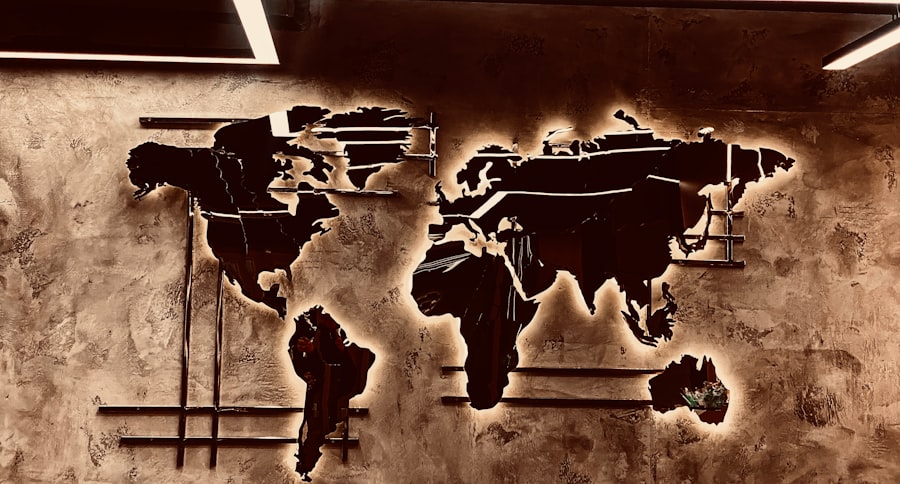Trade routes have been the lifeblood of commerce and cultural exchange throughout human history. These pathways, whether over land or sea, have facilitated the movement of goods, ideas, and people across vast distances, shaping civilizations and economies. The significance of trade routes extends beyond mere economic transactions; they have been instrumental in the development of societies, the spread of religions, and the exchange of knowledge.
From the Silk Road connecting East and West to the maritime routes of the Indian Ocean, trade routes have served as conduits for interaction among diverse cultures. The evolution of trade routes reflects the changing dynamics of global commerce and geopolitics. In ancient times, traders relied on established paths that often followed natural landscapes, such as rivers and mountain passes.
As civilizations advanced, so too did the complexity of these routes, incorporating innovations in navigation and transportation. The rise of empires often coincided with the establishment of robust trade networks, which facilitated not only economic prosperity but also cultural enrichment. Understanding the historical context and significance of these trade routes provides insight into how they have shaped human civilization.
Key Takeaways
- Trade routes have been crucial for the exchange of goods, ideas, and culture throughout history.
- Historical trade routes such as the Silk Road and Trans-Saharan trade route played a significant role in shaping the world.
- Cultural exchange and interactions along trade routes have led to the spread of languages, religions, and traditions.
- The economic impact of trade routes has been immense, leading to the development of cities and the rise of empires.
- Conflict and cooperation have been common along trade routes, with disputes over control and access to resources.
Historical Trade Routes and their Importance
One of the most renowned historical trade routes is the Silk Road, which connected China to the Mediterranean world. This network of overland routes emerged during the Han Dynasty around 130 BCE and flourished for centuries, facilitating not only the trade of silk but also spices, precious metals, and other luxury goods. The Silk Road was pivotal in linking diverse cultures, allowing for the exchange of not just commodities but also ideas, technologies, and religions.
For instance, Buddhism spread from India to China along these routes, profoundly influencing Chinese culture and philosophy. Another significant trade route was the Incense Route, which traversed the Arabian Peninsula and linked the Mediterranean with the spice-rich regions of Arabia and India. This route was crucial for the trade of frankincense and myrrh, highly valued commodities in ancient times.
The cities along this route, such as Petra and Palmyra, became thriving centers of commerce and culture. The importance of these historical trade routes cannot be overstated; they were instrumental in fostering economic interdependence among regions and facilitating cultural exchanges that enriched societies.
Cultural Exchange and Interactions

Cultural exchange along trade routes has been a defining characteristic of human history. As merchants traveled from one region to another, they brought with them not only goods but also their customs, languages, and beliefs. This interaction often led to a blending of cultures, resulting in unique artistic expressions, culinary traditions, and social practices.
For example, the spread of Persian art and architecture influenced various cultures along the Silk Road, leading to a fusion of styles that can still be seen in modern-day structures. The maritime trade routes of the Indian Ocean also played a crucial role in cultural interactions. Traders from diverse backgrounds—Arabs, Indians, Chinese, and Africans—converged at bustling ports such as Malacca and Zanzibar.
This melting pot of cultures fostered an environment where ideas could flourish. The introduction of new agricultural practices, such as rice cultivation from Southeast Asia to Africa, exemplifies how trade routes facilitated not just economic transactions but also significant advancements in technology and knowledge.
Economic Impact of Trade Routes
The economic impact of trade routes is profound and multifaceted.
The establishment of trade routes often led to the rise of powerful city-states and empires that controlled these vital pathways.
For instance, Venice became a dominant maritime power during the Middle Ages due to its strategic position along trade routes connecting Europe with Asia. The wealth generated from trade allowed Venice to flourish culturally and politically. Moreover, trade routes have contributed to globalization long before the term became commonplace.
The exchange of goods such as spices, textiles, and precious metals not only enriched individual traders but also had broader economic implications for entire regions. The demand for exotic goods spurred innovations in transportation and logistics, leading to advancements in shipbuilding and navigation techniques. The economic interdependence fostered by these routes laid the groundwork for modern global trade networks that continue to shape economies today.
Conflict and Cooperation along Trade Routes
While trade routes have facilitated cooperation among different cultures, they have also been sources of conflict throughout history. The competition for control over lucrative trade routes often led to wars and territorial disputes. For example, during the Age of Exploration in the 15th and 16th centuries, European powers vied for dominance over maritime trade routes to Asia.
The Portuguese and Spanish empires engaged in fierce competition to establish colonies and secure trade monopolies, leading to conflicts that reshaped global power dynamics. However, conflict was not the only outcome; cooperation also emerged as a necessary strategy for survival along these routes. Merchants often formed alliances or established treaties to ensure safe passage for their goods.
The Hanseatic League in Northern Europe is a prime example of how merchants banded together to protect their interests along trade routes in the Baltic Sea and North Sea. This cooperative spirit not only enhanced trade security but also fostered a sense of community among traders from different regions.
Modern Trade Routes and Interactions with Neighboring Regions

In contemporary times, trade routes have evolved significantly due to advancements in technology and globalization. Modern infrastructure such as highways, railways, and air transport has transformed how goods are moved across borders. The establishment of free trade agreements has further facilitated international commerce by reducing tariffs and regulatory barriers.
For instance, initiatives like the Belt and Road Initiative (BRI) launched by China aim to enhance connectivity between Asia, Europe, and Africa through a network of railways, highways, and ports. The interactions along modern trade routes are characterized by a complex web of relationships among nations. Economic partnerships are often forged through mutual interests in trade, investment, and technology transfer.
However, these interactions are not without challenges; geopolitical tensions can arise as countries navigate their interests along these vital pathways. The South China Sea is a contemporary example where competing territorial claims intersect with critical shipping lanes that are essential for global trade. In conclusion, trade routes have played an indispensable role in shaping human history through their impact on commerce, culture, and international relations.
Understanding their historical significance provides valuable insights into the complexities of human interaction across time and space.
In exploring the topic of trade routes and interactions with neighboring regions, it’s essential to consider the broader implications of cultural and philosophical exchanges that often accompany such economic interactions. An interesting related article is Introduction to Advaita School: Saṅkaracharya, Ramanujacharya, and the Concepts of Brahman, Atman, Jiva, Jagat, Adhyasa, Avidya, and Apṛthaksiddhi. This article delves into the philosophical schools of thought that have historically influenced and been influenced by the movement of ideas along trade routes, highlighting the interconnectedness of economic and intellectual exchanges.
FAQs
What are trade routes?
Trade routes are pathways or roads used by traders to transport goods and services from one place to another. These routes can be over land or sea and have been used throughout history to facilitate economic and cultural exchange between different regions.
How did trade routes facilitate interactions with neighboring regions?
Trade routes allowed for the exchange of goods, ideas, and technologies between neighboring regions. This interaction led to the spread of cultural practices, languages, and religions, as well as the development of economic and political ties between different societies.
What were some famous trade routes in history?
Some famous trade routes in history include the Silk Road, which connected China to the Mediterranean region, the Trans-Saharan trade routes in Africa, and the maritime trade routes of the Indian Ocean. These routes played a crucial role in shaping the global economy and cultural exchange.
What were the impacts of trade routes on neighboring regions?
Trade routes had significant impacts on neighboring regions, including the spread of new technologies, the exchange of agricultural products and luxury goods, and the diffusion of cultural practices and beliefs. They also led to the development of urban centers and the rise of powerful empires and city-states.
How did trade routes contribute to the development of civilizations?
Trade routes contributed to the development of civilizations by facilitating the exchange of goods, ideas, and technologies. This exchange led to the growth of economies, the spread of knowledge and innovation, and the formation of complex societies with diverse cultural influences.























+ There are no comments
Add yours